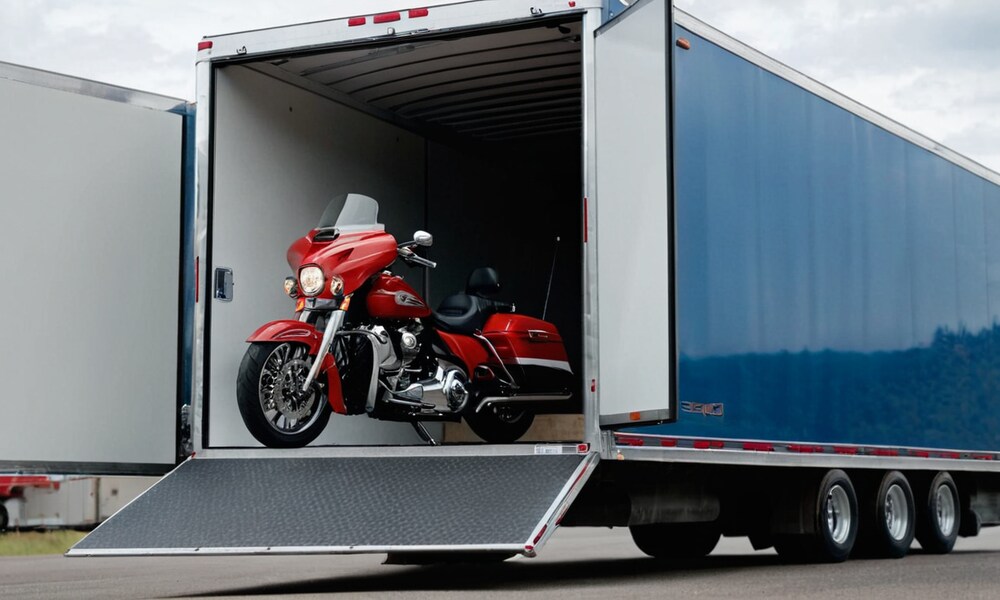
Motorcycle enthusiasts often find themselves contemplating the logistics of transporting their beloved bikes. Whether it’s for a long-distance move, a cross-country adventure, or simply bringing home a newly purchased motorcycle, understanding the costs involved is crucial. From shipping fees to DIY options, here’s a comprehensive guide to motorcycle transport costs. https://www.midwestauctionblock.com/the-best-car-shipping-company-a1-auto-transport
Factors Influencing Transport Costs
Several factors contribute to the overall cost of transporting a motorcycle:
distance: The distance plays a significant role in determining the cost. Longer distances typically entail higher transportation fees due to fuel expenses, labor, and time.
Mode of Transport: The method of transportation chosen greatly influences the cost. Options include motorcycle shipping companies, DIY transport with a trailer or truck, or even riding the motorcycle yourself.
Size and Weight: Larger and heavier motorcycles may incur higher fees due to the need for specialized equipment or additional manpower during transportation.
Urgency: Expedited shipping Services usually come with a premium price tag compared to standard delivery options.
Insurance: Opting for insurance coverage during transport adds to the overall cost but provides peace of mind in case of damage or loss.
Types of Motorcycle Transport
Understanding the various methods of motorcycle transport can help in selecting the most suitable and cost-effective option:
Professional shipping Services: Utilizing motorcycle shipping companies offers convenience and reliability. These services typically involve transporting the bike in an enclosed trailer or crate, ensuring protection from the elements and potential damage. Costs vary based on distance, shipping method, and additional services such as door-to-door delivery or expedited shipping.
DIY Trailer Transport: For those inclined towards a hands-on approach, renting or purchasing a motorcycle trailer provides flexibility and cost savings. However, DIY transport requires careful planning, proper equipment, and adherence to safety regulations. Expenses include trailer rental fees, fuel costs, and possibly accommodation for overnight stops during long journeys.
Riding the Motorcycle: Riding the motorcycle to its destination is often the most economical option, especially for shorter distances. However, this method isn’t feasible for long-haul journeys or when transporting multiple bikes simultaneously. Factors such as fuel, maintenance, and potential wear and tear on the motorcycle should be considered when calculating costs.
Calculating Transport Costs
To estimate the cost of transporting a motorcycle, consider the following steps:
Research Shipping Rates: Obtain quotes from multiple motorcycle shipping companies or rental agencies for comparison. Factors such as distance, delivery timeline, and additional services will impact the final cost.
Evaluate DIY Expenses: If opting for DIY transport, calculate expenses such as trailer rental fees, fuel costs, accommodation (if applicable), and any required equipment or accessories.
Consider Insurance Costs: Factor in the cost of insurance coverage offered by shipping companies or independent insurers to protect the motorcycle during transport.
Account for Additional Expenses: Be prepared for unexpected expenses such as tolls, permits (for oversized trailers), or potential repairs in case of mechanical issues during transport.
Conclusion
Transporting a motorcycle involves various costs influenced by factors such as distance, transport method, and additional services. Whether opting for professional shipping services, DIY transport, or riding the motorcycle oneself, understanding the expenses involved is essential for budget planning and ensuring a smooth transportation process. By considering the factors outlined above and calculating the estimated costs, motorcycle enthusiasts can make informed decisions tailored to their specific needs and preferences.
